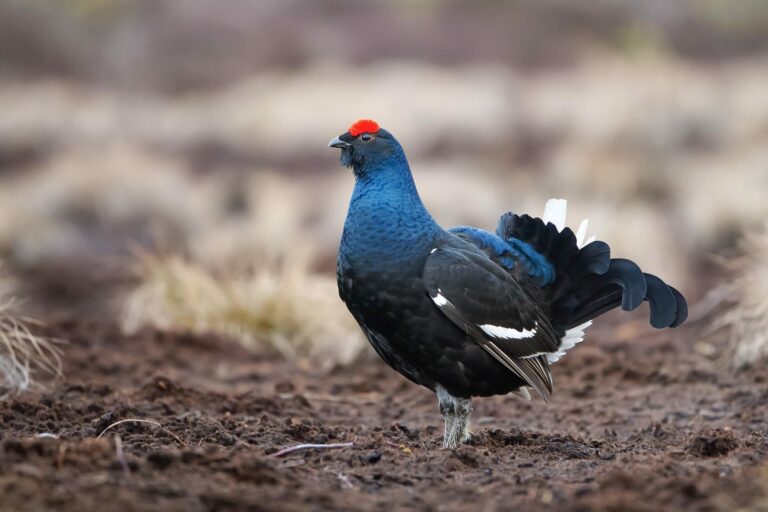Lyrurus tetrix

The black grouse, or Eurasian black grouse (Lyrurus tetrix), exhibits a clear sexual dimorphism. The males are significantly larger, measuring up to 53 cm in length, while females can reach up to 41 cm. The plumage of males is glossy blue to black, with white underwings and lower tail feathers, while females have brown feathers and a forked tail. Notably, both sexes have red bare skin patches called “roses” above their eyes. The black grouse inhabits heathland, moorland, and open forests (Schaefer 2018). The breeding season begins in late April and lasts between 25 and 27 days. The chicks become independent after about four weeks. Loss of habitat poses a threat to the black grouse population, resulting in significant declines in population density (Südbeck et al. 2007). In Germany, it is listed as “critically endangered” on the Red List.
Diet: The black grouse primarily feeds on plant matter, including buds, leaves, and flowers. In summer, insects and spiders also contribute to their diet.
Threat Status: According to the IUCN Red List of Threatened Species, the global status of the black grouse is classified as “Least Concern,” but populations are decreasing. In Germany, it is considered “critically endangered” (Red List Germany).
-
Schaefer, M (2018)Brohmer – Fauna von Deutschland. Ein Bestimmungsbuch unserer heimischen Tierwelt: Quelle & Meyer Verlag GmbH & Co.
-
Südbeck, P et al. (2007)Rote Liste der Brutvögel Deutschlands. In: Ber. Vogelschutz (44).